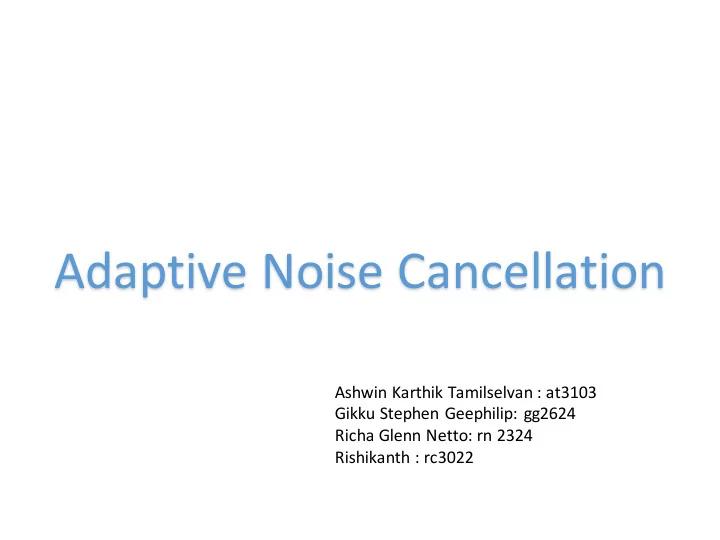

Adaptive Noise Cancellation Ashwin Karthik Tamilselvan : at3103 Gikku Stephen Geephilip: gg2624 Richa Glenn Netto: rn 2324 Rishikanth : rc3022
o Implement Adapative Noise Cancellation on FPGA
W k+1 =W k +e(k)*sign(u k )>>>n
I2C Audio Codec Configurator o The audio codec peripheral(SM2603) present on SoCKit is controlled using I2C communication. o The Audio Codec has a set of configuration registers with each bit position controlling a specific aspect of the functionality. o These registers are configured via I2C using 16 bit data words as specified by the datasheet of SM2603 o We designed a generic I2C controller module, that takes care of the I2C protocol specifications and managing address and data words. o The I2C module generates the I2CSCLK clock for the I2C bus using dividers from the main clock. It runs at the speed of 526KHz which is the maximum speed that the Audio Codec can run at
Audio Codec o The Audio codec has different modes of operations and configurations. o For our setup we are recording the mic input and sampling it via the ADC and the sampled values are passed to the LMS module o The output of the LMS value is then fed to the DAC on the audio codec to play on the output port. o The 3 clocks specified in the datasheet needs to be generated o The MCLK and BCLK are generated using the onboard PLL o The LRC clock is then generated by dividing the BCLK o The ADC is sampling at the rate of 44.1 KHz
LMS – Fast LMS o We implement the Fast LMS using a state machine that handles the various events and sequential processes involved
o Figuring out the Audio Codec o The various clocks and timing cycles for sending and receiving data o Understanding LMS and optimizing it for fast implementation on FPGA for faster convergence o For our setup we are recording the mic input and sampling it via the ADC and the sampled values are passed to the LMS module o The output of the LMS value is then fed to the DAC on the audio codec to play on the output port.
Thank You
Recommend
More recommend